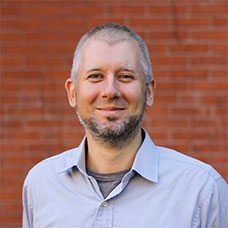We’re pleased to publish the winning essay in PHP’s first essay contest “Dear Paul Ryan…” Congratulations and thank you to all the students who submitted essays! Here are links to our Tuesday and Wednesday finalists.
Dear Mr. Speaker,
You and the new administration could largely dismantle the ACA by eliminating the individual mandate and subsidies through budget reconciliation. However, that pesky saying comes to mind, “be careful what you wish for.” The uncertainty of delayed repeal without a clear plan for replacement could prematurely collapse the insurance exchanges and leave the Republican-controlled Congress in crisis.
As you mention in “A Better Way,” “people must come first” and we need to work towards a system that provides “high-quality health care for all.” Health reform often focuses on the decision making of individuals – patients and their doctors – and rightfully so. We try to elicit efficient consumption of health care from patients by balancing “skin in the game” with the long-run costs of foregone care. However, we have known for decades that patients are not good at differentiating between medically effective and low-value care with more recent evidence that increased cost-sharing can actually reduce utilization of clinically important services.
We develop new payment models to address the supplier side incentives to increase utilization and hope that these mechanisms combine to yield more efficient use of care. Though accountable care organizations have gained traction as a new form of managed care, promising signs of reductions in low-value care in Medicare have not translated over to a more diverse Medicaid population. We also peg Medicare reimbursements to 30-day readmission rates that may be a flawed measure of quality of care–but perhaps correctable.
There isn’t a silver bullet that will ‘fix’ health care spending. Greater price transparency would be great for consumers – in theory – if savings were substantial (not so far) and records from an MRI or blood tests could be instantly transferred from the low-cost provider to your preferred physician (but their EHRs probably can’t talk to each other). So what should we do? I would argue that all of this is important work given that even a half or one percent change in total health care spending is still billions of dollars. That said, it is only window dressing. We need to focus on the underlying causes of poor health and to do this, we must focus on public health.
Health insurance, no matter how well designed, cannot improve population health and create massive reductions in health care spending.
A healthy population is critical to unleashing our innovative capacity and creating robust economic growth. Health insurance, no matter how well designed, cannot improve population health and create massive reductions in health care spending. Racial disparities in health care are associated with over $200 billion per year in economic losses through lost productivity and premature death, not including another $35 billion per year in excess health care spending. And that ignores the psychological toll on millions of Americans and their families. These disparities have evolved from the social determinants of health, including education, income, housing, and neighborhoods, which play a huge role in determining health outcomes. The fact that two children born a few Metro stops apart can have an 8 year difference in life expectancy doesn’t resonate with the vision of equal opportunity and social mobility that America is supposed to represent.
So again, what do we do? Public health is about much more than infectious disease–it is about identifying the root causes and improving health through any means necessary. For example, CDC developed a hard-hitting media campaign that encouraged 100,000 smokers to quit at a cost of less than $500 per quitter in just its first year [Disclosure: I am part of the evaluation team at RTI International for this campaign.] Twenty-four cities in Missouri banded together to rebuild their community by thinking holistically, the Columbia Gorge region of Oregon improved food security and gave its residents a voice in the structure of Medicaid spending, and so on. There are dozens of stories like this around the country but sadly not enough.
Make the Prevention and Public Health Fund, currently part of the ACA, permanent and fully funded through standalone legislation.
If we want to truly make a difference, here is a simple way to start. Make the Prevention and Public Health Fund, currently part of the ACA, permanent and fully funded through standalone legislation. We spend 75 percent of our health care dollars on preventable disease but only three percent on prevention. If we want to make a dent in spending, we need to focus on prevention (not just preventive services) and really mean it–by taking it farther from the political arena.
This is only a first step. Building a Culture of Health will require bold action on housing, education, and other social determinants of health. However, before we can go there, we all need to agree that health is a shared value and understand how the social determinants of health shape our lives – only then can we begin to reshape federal policy and the budget to address health care spending. We both want what is best for America – taking this small step forward together and making public health a non-partisan issue is a smart investment in our future.
Featured Image: U.S. Department of Agriculture, USDA Photo by Lance Cheung. Students saw, touched and sometimes tasted produce that was new to them at Nottingham Elementary School in Arlington, VA, on Wednesday, October 12, 2011. Farmers from Bigg Riggs Farm in Hampshire County, WV, and Maple Avenue Market Farm in Vienna, VA were very popular with the students. Today’s menu included roasted chicken, roasted butternut squash with dried cranberries, farm fresh mixed lettuce salad, turkey wraps, pita wedges, hot muffins, carrots, Asian pears and more. Used under CC BY 2.0 license/cropped from the original













